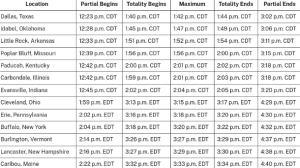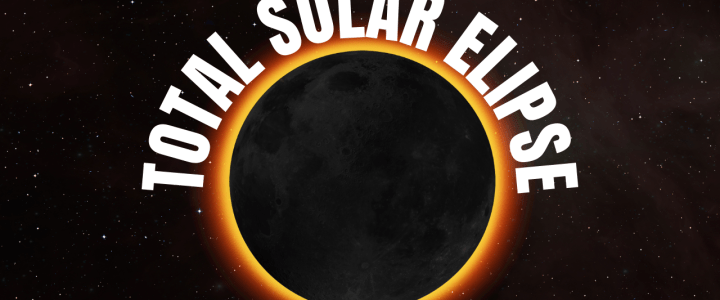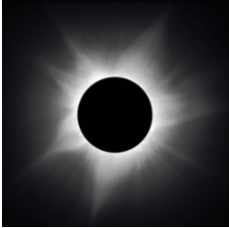On April 8 2024 there is going to be a total solar eclipse in the United States.
Mexico, the United States, and a bit of Canada, are going to be able to see the total eclipse. With the surrounding states, such as California or Arizona, will only get a partial eclipse at the maximum.
How long will totality be and why does it happen?

The duration of the totality is up to four minutes and twenty-seven seconds. Which is nearly double the time of The Great American Eclipse on August 21, 2017. The 2017 total solar eclipse was witnessed by about twenty million people from Oregon to South Carolina.
A solar eclipse occurs when the moon lines up perfectly with the Earth and the Sun, causing it to block out the sunlight. It takes a few hours before the moon’s shadow slices a diagonal line from the southwest to the northeast across North America, briefly plunging communities along the track into darkness. The reason why totality lasts longer is because, by a cosmic stroke of luck, the moon will make the month’s closest approach to Earth the day before the total solar eclipse. That puts the moon just 223,000 miles away on eclipse day. This causes the moon to appear slightly bigger in the sky thanks to the proximity which results in the sun being blocked by the moon longer. When a closer moon pairs up with a more distant sun, totality can last as long as an astounding seven and a half minutes. The last time the world saw more than seven minutes of totality was in 1973 over Africa. That won’t happen again until 2150 over the Pacific. This is a shame because most and or all of the people seeing the April 8 2024 solar eclipse will all be dead.
How do you get the best view and what do you need?
People are getting tickets to go to Texas and Mexico for the best views on the eclipse. Some hotels charge $500 a night or more if they’re even available! Along with some hotels doing a three-night stay at minimum around the eclipse. Camping is also a viable option.
Sunglasses aren’t going to be of any use during an eclipse. A good way to get ready for the eclipse is to get special glasses that are specially made for eclipses. Make sure that these glasses aren’t torn or have any scratches. The moments that you can take off the glasses are when the moon has completely covered the sun aka the full eclipse, but don’t take off the glasses before or after totality. Cameras, binoculars, and telescopes must be outfitted with special solar filters for safe viewing. Bottom line, never look at an exposed sun without proper protection any day of the year. Along with already booking places to stay, how to get there, and things to do wherever you are staying.
Don’t worry too much if you don’t have front-row seats. All of the United States will be able to see at minimum a partial solar eclipse. Others at a maximum of a total solar eclipse. Hope and pray to the weather gods that the clouds don’t cover the eclipse!
The next total solar eclipse and information on it.
The next total solar eclipse will be in 2026. Which will grace the northern fringes of Greenland, Iceland, and Spain. Unfortunately, North America won’t experience totality again until 2033. Even with that, Alaska is getting sole dibs. Then that’s it until 2044, when totality will be confined to Western Canada, Montana, and North Dakota. There also will not be another U.S. eclipse, spanning coast to coast, until 2045. That one will stretch from Northern California to Cape Canaveral, Florida.
For most of its path over North America, the eclipse will occur in the early- to mid-afternoon. If you stay outside the path of totality and drive in on eclipse day. Be forewarned, there will be tons of traffic in many places. Go early and keep in mind that totality lasts longer the closer you are to the path’s center line.
Are you going to go see the full thing? Or are you going to stay at home and look at the partial eclipse? Let us know down below!
Think i missed anything or want to know more? Check out the articles used!


